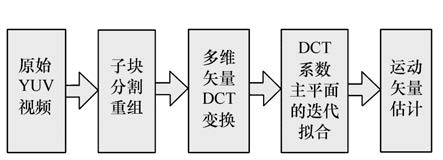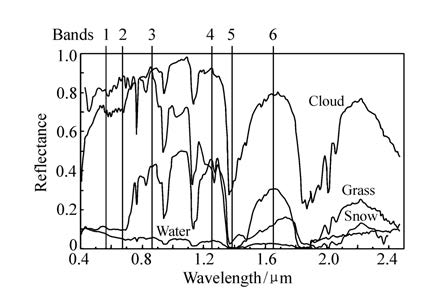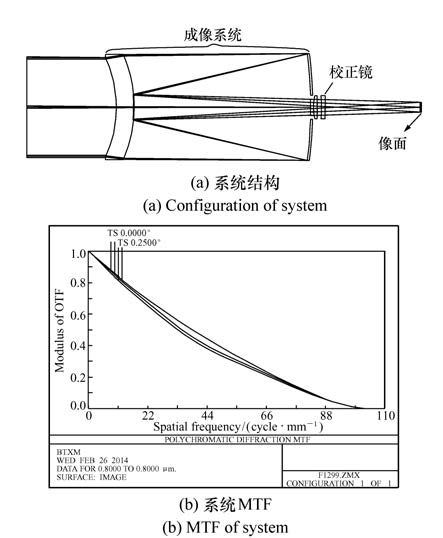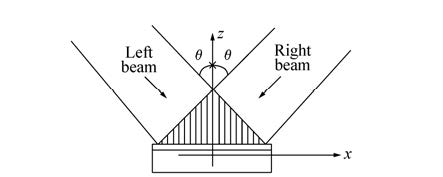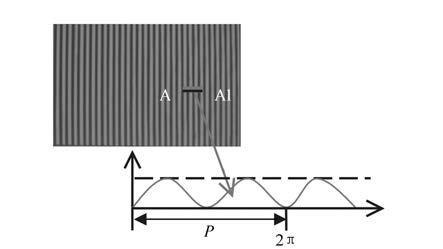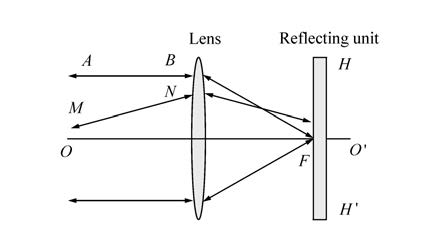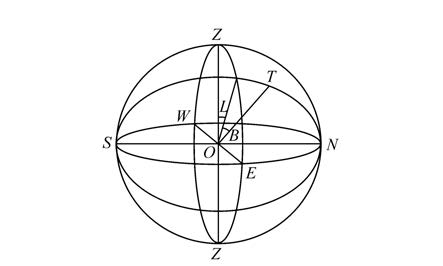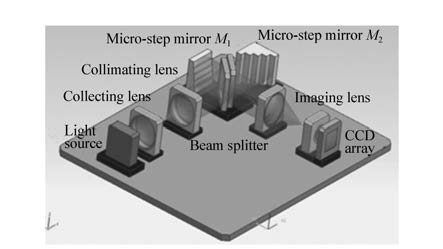2015 Vol. 8, No. 2
2015, 8(2): 169-181.
doi: 10.3788/CO.20150802.0169
Abstract:
Deep-ultraviolet(DUV) is the shortest wavelength of conventional optical techniques. With the wavelength shrinks, DUV optical coatings are confronted with a series of technical problems. As a kind of typical ultra precision optical system, DUV lithography system proposes stringent requirements on DUV coating optics. In this paper, coating materials and the coating design procedures of DUV coatings are summarized. Then, key problems on the guarantee of optical properties are discussed such as coating deposition techniques, surface figure preservation of coated optics, coating thickness distribution correction of large curved surfaces. Finally, detailed analysis for the environmental adaptability of DUV coatings are made to critical factors such as the environmental contaminations and the laser irritation characters. The above analysis points out directions to breakthrough bottlenecks on the development of DUV lithograph coatings and meet the requirements of ultra-precision DUV optical systems.
Deep-ultraviolet(DUV) is the shortest wavelength of conventional optical techniques. With the wavelength shrinks, DUV optical coatings are confronted with a series of technical problems. As a kind of typical ultra precision optical system, DUV lithography system proposes stringent requirements on DUV coating optics. In this paper, coating materials and the coating design procedures of DUV coatings are summarized. Then, key problems on the guarantee of optical properties are discussed such as coating deposition techniques, surface figure preservation of coated optics, coating thickness distribution correction of large curved surfaces. Finally, detailed analysis for the environmental adaptability of DUV coatings are made to critical factors such as the environmental contaminations and the laser irritation characters. The above analysis points out directions to breakthrough bottlenecks on the development of DUV lithograph coatings and meet the requirements of ultra-precision DUV optical systems.
2015, 8(2): 182-190.
doi: 10.3788/CO.20150802.0182
Abstract:
High-power picosecond ultraviolet lasers have attracted considerable interests as novel laser source, due to their wide applications in high precision product, laser medical system, optoelectronic countermeasure and structuring of silicon. The research and development on high-power picosecond ultraviolet laser based on technology of sum frequency are classified and summarized. First, the mechanism of sum frequency and picosecond ultraviolet crystal are discussed. Then the high-power picosecond ultraviolet laser, the high-peak-power picosecond ultraviolet laser, and the high-power and high-peak-power picosecond ultraviolet lasers are discussed. Finally, the prospect of further development and applications of high-power picosecond ultraviolet laser sources is put forward. According to the latest development, it is indicated that the high power picosecond ultraviolet lasers developed in abroad is in maturity stage but just in starting stage at. The high-power picosecond ultraviolet lasers based on photonic crystal fiber laser and thin disk laser have some merits, which play important roles in laser industry.
High-power picosecond ultraviolet lasers have attracted considerable interests as novel laser source, due to their wide applications in high precision product, laser medical system, optoelectronic countermeasure and structuring of silicon. The research and development on high-power picosecond ultraviolet laser based on technology of sum frequency are classified and summarized. First, the mechanism of sum frequency and picosecond ultraviolet crystal are discussed. Then the high-power picosecond ultraviolet laser, the high-peak-power picosecond ultraviolet laser, and the high-power and high-peak-power picosecond ultraviolet lasers are discussed. Finally, the prospect of further development and applications of high-power picosecond ultraviolet laser sources is put forward. According to the latest development, it is indicated that the high power picosecond ultraviolet lasers developed in abroad is in maturity stage but just in starting stage at. The high-power picosecond ultraviolet lasers based on photonic crystal fiber laser and thin disk laser have some merits, which play important roles in laser industry.
2015, 8(2): 191-197.
doi: 10.3788/CO.20150802.0191
Abstract:
To realize the motion vector estimation targeted at moving objects in video, the motion estimation system based on transformation domain of multi-dimensional vector matrix is established. The research is then carried out in transformation domain to study on multi-dimensional energy concentration plane formed by moving objects in moving videos. Firstly, the theory of multi-dimensional vector matrix and transformation are introduced. Then the theoretical derivation of energy concentration plane in transformation domain formed by moving objects is presented. The next step is to calculate the motion vector using plane fitting method. Finally,the performance and iteration speed among a few methods are analyzed. Experimental results show that the motion vector accuracy obtained by moving plane fitting in multi-dimensional vector matrix transformation domain can reach 10-2 pixel. A new high accuracy motion vector estimation method in transformation domain is provided.
To realize the motion vector estimation targeted at moving objects in video, the motion estimation system based on transformation domain of multi-dimensional vector matrix is established. The research is then carried out in transformation domain to study on multi-dimensional energy concentration plane formed by moving objects in moving videos. Firstly, the theory of multi-dimensional vector matrix and transformation are introduced. Then the theoretical derivation of energy concentration plane in transformation domain formed by moving objects is presented. The next step is to calculate the motion vector using plane fitting method. Finally,the performance and iteration speed among a few methods are analyzed. Experimental results show that the motion vector accuracy obtained by moving plane fitting in multi-dimensional vector matrix transformation domain can reach 10-2 pixel. A new high accuracy motion vector estimation method in transformation domain is provided.
2015, 8(2): 198-204.
doi: 10.3788/CO.20150802.0198
Abstract:
To improve the effectiveness of remote-sensing image data, a cloud detection method based on the reflectivity of hyperspectral remote image is proposed. According to the characteristic of the reflectivity between different earth background, image data of five specific wavelengths are chosen, then high-cloud area and low-cloud are determined by judging the threshold of different spectrum. The object cloud area can be obtained by combining the high-cloud and low-cloud areas. The experiment result indicates that the accuracy of cloud detection is more than 90%, while false alarm ratio is less than 1%, which proves that the cloud area can be accurately identified from multiple types of earth background.
To improve the effectiveness of remote-sensing image data, a cloud detection method based on the reflectivity of hyperspectral remote image is proposed. According to the characteristic of the reflectivity between different earth background, image data of five specific wavelengths are chosen, then high-cloud area and low-cloud are determined by judging the threshold of different spectrum. The object cloud area can be obtained by combining the high-cloud and low-cloud areas. The experiment result indicates that the accuracy of cloud detection is more than 90%, while false alarm ratio is less than 1%, which proves that the cloud area can be accurately identified from multiple types of earth background.
2015, 8(2): 205-210.
doi: 10.3788/CO.20150802.0205
Abstract:
This paper proposes that the photon detection efficiency(PDE) of Multi-Pixel Photon Counter(MPPC) can be improved by the optical crosstalk(OC) effect when taking the output amplitude or output charge of the avalanche pulses as the parameter of photon counting through analyzing the operating principle and characteristics of the MPPC. The influence of the optical crosstalk effect on the photon detection efficiency is analyzed. The theoretical results show that the photon detection efficiency increases significantly by the optical crosstalk effect of the MPPC under these photon counting modes. According to the results calculated by our model, the equivalent photon detection efficiency taking the OC effect into account is increased by about 50%,(i.e.:reaching 45%), if the total avalanche pixel number of MPPC is 1 600, the photon detection efficiency regardless of the OC effect is 30%, the OC probability is 50% and the mean photon number is 10 per light pulse. This result is significant in the application of low light level detection such as astrophysics, particle physics, and fluorescence spectroscopy.
This paper proposes that the photon detection efficiency(PDE) of Multi-Pixel Photon Counter(MPPC) can be improved by the optical crosstalk(OC) effect when taking the output amplitude or output charge of the avalanche pulses as the parameter of photon counting through analyzing the operating principle and characteristics of the MPPC. The influence of the optical crosstalk effect on the photon detection efficiency is analyzed. The theoretical results show that the photon detection efficiency increases significantly by the optical crosstalk effect of the MPPC under these photon counting modes. According to the results calculated by our model, the equivalent photon detection efficiency taking the OC effect into account is increased by about 50%,(i.e.:reaching 45%), if the total avalanche pixel number of MPPC is 1 600, the photon detection efficiency regardless of the OC effect is 30%, the OC probability is 50% and the mean photon number is 10 per light pulse. This result is significant in the application of low light level detection such as astrophysics, particle physics, and fluorescence spectroscopy.
2015, 8(2): 211-219.
doi: 10.3788/CO.20150802.0211
Abstract:
According to the detector arrays mosaic imaging system designed with four lenses based on concentric spherical lens, its applied algorithms about the image registration is investigated, such as feature detection and extraction, feature vector matching and screening, spatial transformation model and parameter estimation, <em>etc</em>. First, the fast-hessian detection algorithm is used to find features, and generate feature vector of SURF descriptors. Second, the fast approximate nearest neighbor search algorithm is used to obtain the initial matching points and to sort the Euclidean distance between feature vectors in the matching points. Then after screening the feature points, the good ones are preserved based on a reasonable threshold interval from the optical design parameters. Finally, the transform parameters are estimated by using the improved progressive sample consensus method and the spatial geometry transformation relationship is obtained about the reference image and registration image. Experimental results indicate that the algorithm has some invariance about the size, rotation and illumination changes; the feature matching time is 0.542 s, and the registration transform time is 0.031 s; the registration error precision is less than 0.1 pixel, which can meet the requirements of the imaging system about the image registration including good real-time and accuracy performance.
According to the detector arrays mosaic imaging system designed with four lenses based on concentric spherical lens, its applied algorithms about the image registration is investigated, such as feature detection and extraction, feature vector matching and screening, spatial transformation model and parameter estimation, <em>etc</em>. First, the fast-hessian detection algorithm is used to find features, and generate feature vector of SURF descriptors. Second, the fast approximate nearest neighbor search algorithm is used to obtain the initial matching points and to sort the Euclidean distance between feature vectors in the matching points. Then after screening the feature points, the good ones are preserved based on a reasonable threshold interval from the optical design parameters. Finally, the transform parameters are estimated by using the improved progressive sample consensus method and the spatial geometry transformation relationship is obtained about the reference image and registration image. Experimental results indicate that the algorithm has some invariance about the size, rotation and illumination changes; the feature matching time is 0.542 s, and the registration transform time is 0.031 s; the registration error precision is less than 0.1 pixel, which can meet the requirements of the imaging system about the image registration including good real-time and accuracy performance.
2015, 8(2): 220-226.
doi: 10.3788/CO.20150802.0220
Abstract:
Research on co-aperture designing methods with which the space imaging optical system can be used as laser transmitting antenna is important to alleviate the load of the satellite and to deal with sudden trouble. First, space laser transmitting design request was analyzed based on the power transferring in laser communication link and the difference between imaging system and laser transmitting system was given. Then three design methods generally used for co-aperture system based on a given imaging optical system were proposed. Their performance were analyzed and compared, and their advantage, disadvantage and fitting areas were given. Finally, the transmitting beam of the designed co-aperture system was simulated, and the imaging and laser communicating experiment were made after system fabricating and aligning. Results show that the least divergence angle of the transmitting beam is about 18.2 μrad which is close to the system diffraction limitation. Besides the transmitting beam is of great quality and the received image is nearly same as the one obtained by the imaging system when observed with the naked eyes. It is approved that the co-aperture design can satisfy the need of space imaging and laser communicating mission well.
Research on co-aperture designing methods with which the space imaging optical system can be used as laser transmitting antenna is important to alleviate the load of the satellite and to deal with sudden trouble. First, space laser transmitting design request was analyzed based on the power transferring in laser communication link and the difference between imaging system and laser transmitting system was given. Then three design methods generally used for co-aperture system based on a given imaging optical system were proposed. Their performance were analyzed and compared, and their advantage, disadvantage and fitting areas were given. Finally, the transmitting beam of the designed co-aperture system was simulated, and the imaging and laser communicating experiment were made after system fabricating and aligning. Results show that the least divergence angle of the transmitting beam is about 18.2 μrad which is close to the system diffraction limitation. Besides the transmitting beam is of great quality and the received image is nearly same as the one obtained by the imaging system when observed with the naked eyes. It is approved that the co-aperture design can satisfy the need of space imaging and laser communicating mission well.
2015, 8(2): 227-233.
doi: 10.3788/CO.20150802.0227
Abstract:
In this paper, we analyzed the principles of tiling SLMs to enlarge the viewing angle of holographic 3D reconstructions. Based on the idea of tiling multi-SLMs, we designed a holographic 3D display system using planar mirrors, beam splitters and two transmission-type SLMs tiled in curved configuration to enlarge the viewing angle of reconstructed image. We calculated computer-generated holograms of a pyramid using slice-based Fresnel diffraction algorithm, and reconstructed it with self-setup holographic display system. The results indicate that, in contrast to 1.7° of viewing angle obtained by a single SLM, the viewing angle of holographic reconstructed images is enlarged to 3.2° with 2 tiling transmission-type SLMs by about 1.9 times. The beam splitter can remove the gap of two SLMs' active areas to realize seamless tiling. This method is also applicable to tile more SLMs in curved configuration and can effectively enlarge the viewing angle of holographic display.
In this paper, we analyzed the principles of tiling SLMs to enlarge the viewing angle of holographic 3D reconstructions. Based on the idea of tiling multi-SLMs, we designed a holographic 3D display system using planar mirrors, beam splitters and two transmission-type SLMs tiled in curved configuration to enlarge the viewing angle of reconstructed image. We calculated computer-generated holograms of a pyramid using slice-based Fresnel diffraction algorithm, and reconstructed it with self-setup holographic display system. The results indicate that, in contrast to 1.7° of viewing angle obtained by a single SLM, the viewing angle of holographic reconstructed images is enlarged to 3.2° with 2 tiling transmission-type SLMs by about 1.9 times. The beam splitter can remove the gap of two SLMs' active areas to realize seamless tiling. This method is also applicable to tile more SLMs in curved configuration and can effectively enlarge the viewing angle of holographic display.
2015, 8(2): 234-240.
doi: 10.3788/CO.20150802.0234
Abstract:
In order to meet the requirement of compact structure and athermal stability with wide temperature range, a middle infrared catadioptric optical system is designed. According to the requirements of other guided modes, the focal length and aperture of the primary mirror is fixed. The height of the principal ray reaching the relay system can be reduced. The aperture of the lens can be decreased, which will lower the cost. A compact infrared imaging system with a wavelength 3.7-4.8 μm, focal length <em>f</em>=300 mm, <em>F</em> number 2, is presented in this paper. The results show that the system performs well and the optical transfer function of each field is close to the diffraction limit. Between -50-70℃, passive optical athermalization can be realized in this system. For this system, the tolerance analysis and some ways of resisting the stray light are presented at last. It shows that the MIR system meet the demand of actual processing and application.
In order to meet the requirement of compact structure and athermal stability with wide temperature range, a middle infrared catadioptric optical system is designed. According to the requirements of other guided modes, the focal length and aperture of the primary mirror is fixed. The height of the principal ray reaching the relay system can be reduced. The aperture of the lens can be decreased, which will lower the cost. A compact infrared imaging system with a wavelength 3.7-4.8 μm, focal length <em>f</em>=300 mm, <em>F</em> number 2, is presented in this paper. The results show that the system performs well and the optical transfer function of each field is close to the diffraction limit. Between -50-70℃, passive optical athermalization can be realized in this system. For this system, the tolerance analysis and some ways of resisting the stray light are presented at last. It shows that the MIR system meet the demand of actual processing and application.
2015, 8(2): 241-247.
doi: 10.3788/CO.20150802.0241
Abstract:
The beamsplitter has a critical role in the interference lithography, which splits one laser beam into two, therefore these two waves can interfere to produce the fringes. The instability of the interference lithography, which is determined by the selection of the beamsplitter, not only decreases the contrast of the patterns, but also causes the phase distortion, high scatter light and low quality of the groove. To improve the stability of the interference lithography system, based on the period equation of the fringes and the correction between deviation of the incidence and the interference beam angular variations(2<em>θ</em>), we discuss the phase distortion due to the alignment error of cube and the grating beamsplitter, and analyze the stability of the two different interference lithography system. Results indicate that in the grating manufacture, using the grating as the beamsplitter instead of the cube beamsplitter can increase the stability of lithography system by 5 to 6 orders of magnitude, which has a significant effect on grating fabrication with long-time exposure.
The beamsplitter has a critical role in the interference lithography, which splits one laser beam into two, therefore these two waves can interfere to produce the fringes. The instability of the interference lithography, which is determined by the selection of the beamsplitter, not only decreases the contrast of the patterns, but also causes the phase distortion, high scatter light and low quality of the groove. To improve the stability of the interference lithography system, based on the period equation of the fringes and the correction between deviation of the incidence and the interference beam angular variations(2<em>θ</em>), we discuss the phase distortion due to the alignment error of cube and the grating beamsplitter, and analyze the stability of the two different interference lithography system. Results indicate that in the grating manufacture, using the grating as the beamsplitter instead of the cube beamsplitter can increase the stability of lithography system by 5 to 6 orders of magnitude, which has a significant effect on grating fabrication with long-time exposure.
2015, 8(2): 248-254.
doi: 10.3788/CO.20150802.0248
Abstract:
In this paper, the traditional optical triangulation model based on phase method is improved, and a new model and calibration method are used which is independent of geometric parameters. The new model requires only calculating phase difference thorough phase shift formula without adding any geometry position parameters, which simplifies the requirement of resolving the altitude matrix. Parallel tests show with the new model, a measurement error of 0.107 mm is reached, showing a good accuracy. Through the study of this paper. This new model calibration method can overcome the limitations of traditional method and minimize the error sources as well as improve the capability of anti-interference.
In this paper, the traditional optical triangulation model based on phase method is improved, and a new model and calibration method are used which is independent of geometric parameters. The new model requires only calculating phase difference thorough phase shift formula without adding any geometry position parameters, which simplifies the requirement of resolving the altitude matrix. Parallel tests show with the new model, a measurement error of 0.107 mm is reached, showing a good accuracy. Through the study of this paper. This new model calibration method can overcome the limitations of traditional method and minimize the error sources as well as improve the capability of anti-interference.
2015, 8(2): 255-262.
doi: 10.3788/CO.20150802.0255
Abstract:
Based on the cat-eye effect of photoelectric devices, this paper establishes a system of active laser detection with CCD, and puts forward an effective algorithm for detecting peeping devices. The proposed algorithm acquires one image when the laser power is on, and the other image when the laser power is off in the laser pulse interval. According to the echo intensity difference on the peeping devices and usual objects, the target is detected by using the background difference method. The experimental results show that, within a radius of 5 m, the system can effectively and quickly detect peeping devices from background, and is not influenced by the scene and light. Through the experiments on 20 different scenes, the correct detection rate is 95%, and the detection time of each frame is in the range of 0.015-0.021 s, meeting the demand of real-time detection, which validate the correctness and effectiveness of this system.
Based on the cat-eye effect of photoelectric devices, this paper establishes a system of active laser detection with CCD, and puts forward an effective algorithm for detecting peeping devices. The proposed algorithm acquires one image when the laser power is on, and the other image when the laser power is off in the laser pulse interval. According to the echo intensity difference on the peeping devices and usual objects, the target is detected by using the background difference method. The experimental results show that, within a radius of 5 m, the system can effectively and quickly detect peeping devices from background, and is not influenced by the scene and light. Through the experiments on 20 different scenes, the correct detection rate is 95%, and the detection time of each frame is in the range of 0.015-0.021 s, meeting the demand of real-time detection, which validate the correctness and effectiveness of this system.
2015, 8(2): 263-269.
doi: 10.3788/CO.20150802.0263
Abstract:
In order to improve the static pointing accuracy of level mounting optoelectronic telescope, the static pointing models are presented after theoretical analysis and experimental research, and modified model for level mounting optoelectronic telescope is established. First, spherical harmonic function model and modified model for level mounting optoelectronic telescope are introduced. Then 70 stars from Tycho-2 scattered uniformly in the sky were selected to be measured, and the discrete values of the 70 stars' pointing errors were gained in longitude and latitude dimensions, respectively. Finally, the coefficients in the total pointing error model were obtained by least square fitting method. Experimental results indicate that pointing precision of level mounting optoelectronic telescope can be improved from 152.10" (without modified model) to 4.76" (with modified model). The modified model for level mounting optoelectronic telescope can satisfy the requirements in general design, which can be widely applied in science and engineering field.
In order to improve the static pointing accuracy of level mounting optoelectronic telescope, the static pointing models are presented after theoretical analysis and experimental research, and modified model for level mounting optoelectronic telescope is established. First, spherical harmonic function model and modified model for level mounting optoelectronic telescope are introduced. Then 70 stars from Tycho-2 scattered uniformly in the sky were selected to be measured, and the discrete values of the 70 stars' pointing errors were gained in longitude and latitude dimensions, respectively. Finally, the coefficients in the total pointing error model were obtained by least square fitting method. Experimental results indicate that pointing precision of level mounting optoelectronic telescope can be improved from 152.10" (without modified model) to 4.76" (with modified model). The modified model for level mounting optoelectronic telescope can satisfy the requirements in general design, which can be widely applied in science and engineering field.
2015, 8(2): 270-276.
doi: 10.3788/CO.20150802.0270
Abstract:
In order to fulfill the requirement that optical sampling pulse time jitter is less than 100 femtosecond in the high precision WDM/OTDM optical sampling system, a system using the autocorrelator to measure the time delay is developed. By a fiber coupler connecting a reference optical path to copy the optical pulse, the initialized optical pulse is correlated with the copied pulse to get the time delay between measured optical path and the reference optical path, and then to get the relatively time delay between the measured optical paths. The experiment result indicates that the precision of the autocorrelation method is better than 50 femtosecond, which can satisfy the research requirements of the WDM/OTDM system.
In order to fulfill the requirement that optical sampling pulse time jitter is less than 100 femtosecond in the high precision WDM/OTDM optical sampling system, a system using the autocorrelator to measure the time delay is developed. By a fiber coupler connecting a reference optical path to copy the optical pulse, the initialized optical pulse is correlated with the copied pulse to get the time delay between measured optical path and the reference optical path, and then to get the relatively time delay between the measured optical paths. The experiment result indicates that the precision of the autocorrelation method is better than 50 femtosecond, which can satisfy the research requirements of the WDM/OTDM system.
2015, 8(2): 277-298.
doi: 10.3788/CO.20150802.0277
Abstract:
According to the urgent requirement to the microminiature, lightweight, and staticize on Fourier transform infrared spectrometer in the field of environment, medical treatment, space exploration, meteorology, military and security, a spatial modulation Fourier transform infrared spectrometer based on MOEMS micro multi-step mirrors(MMSMs) was proposed. In theory, the physical model and the optical principle of spatial modulation Fourier transform infrared spectrometer was built and researched. A method of leaving extra patches in the boundary to suppress diffraction noise was put forward, and an algorithm based on the least-squares approximation was proposed to correct sampling error. According to the analyzing on the fabrication accuracy of MMSMs, the dispersion characteristics and the transmission efficiency of the beam splitter, the design method and the technical parameters were determined. In the core technology, three different kinds of manufacture method of MMSMs were put forward. By ways of analyzing the origin of the error, the tolerance of two MMSMs was given. The two MMSMs were completed by the method of electroform, positioning of the growth multilayer film, and inclined plane method respectively. In the system design, the infrared collimation system and imaging system were designed and manufactured. According to modeling simulation of the whole machine system, the source of stray light noise was analyzed. In the interferogram processing, using zero crossing sampling model and image segmentation algorithm, the sampling sequence was obtained. By interpolation, zero filling, continuation and convolution of the interference sequence, the phase error of spectrum was corrected. After that, the spectrum was obtained from the interferogram via discrete Fourier transform. Finally, the integration and coupling technology of the system were researched. The characteristics of infrared spectrometer developed in this project were as follows:Firstly, the moving mirror driven mechanism and the sampling control mechanism were cancelled, hence, micro-miniature and lightweight were realized. Secondly, the spatial sampling mode through MMSMs increased the stability and reliability; the characteristics of real-time sampling decreased time wastage and enhanced the optical efficiency. Thirdly, the MMSMs fabricated by MOEMS technology increased the sampling precision. Therefore, the infrared spectrometer designed by us has a great application prospect.
According to the urgent requirement to the microminiature, lightweight, and staticize on Fourier transform infrared spectrometer in the field of environment, medical treatment, space exploration, meteorology, military and security, a spatial modulation Fourier transform infrared spectrometer based on MOEMS micro multi-step mirrors(MMSMs) was proposed. In theory, the physical model and the optical principle of spatial modulation Fourier transform infrared spectrometer was built and researched. A method of leaving extra patches in the boundary to suppress diffraction noise was put forward, and an algorithm based on the least-squares approximation was proposed to correct sampling error. According to the analyzing on the fabrication accuracy of MMSMs, the dispersion characteristics and the transmission efficiency of the beam splitter, the design method and the technical parameters were determined. In the core technology, three different kinds of manufacture method of MMSMs were put forward. By ways of analyzing the origin of the error, the tolerance of two MMSMs was given. The two MMSMs were completed by the method of electroform, positioning of the growth multilayer film, and inclined plane method respectively. In the system design, the infrared collimation system and imaging system were designed and manufactured. According to modeling simulation of the whole machine system, the source of stray light noise was analyzed. In the interferogram processing, using zero crossing sampling model and image segmentation algorithm, the sampling sequence was obtained. By interpolation, zero filling, continuation and convolution of the interference sequence, the phase error of spectrum was corrected. After that, the spectrum was obtained from the interferogram via discrete Fourier transform. Finally, the integration and coupling technology of the system were researched. The characteristics of infrared spectrometer developed in this project were as follows:Firstly, the moving mirror driven mechanism and the sampling control mechanism were cancelled, hence, micro-miniature and lightweight were realized. Secondly, the spatial sampling mode through MMSMs increased the stability and reliability; the characteristics of real-time sampling decreased time wastage and enhanced the optical efficiency. Thirdly, the MMSMs fabricated by MOEMS technology increased the sampling precision. Therefore, the infrared spectrometer designed by us has a great application prospect.



 Abstract
Abstract FullText HTML
FullText HTML PDF 1328KB
PDF 1328KB
